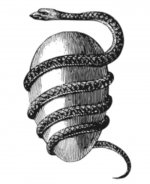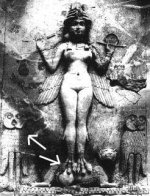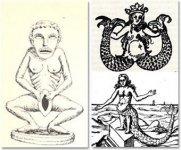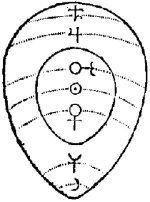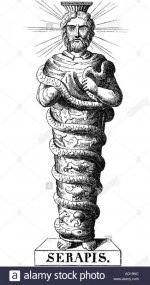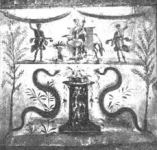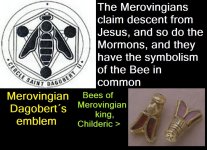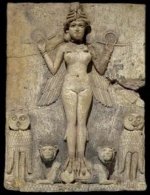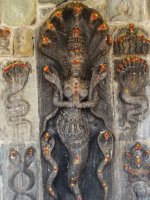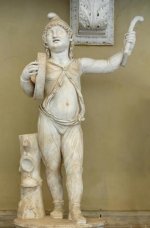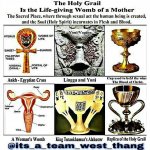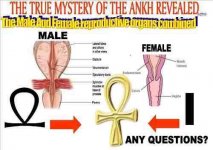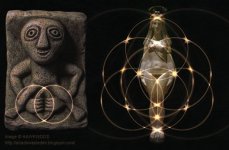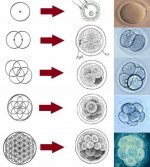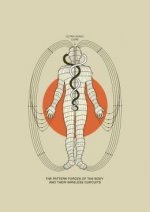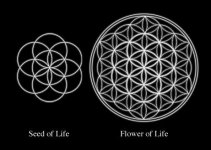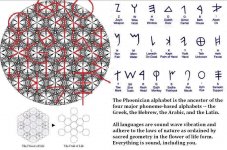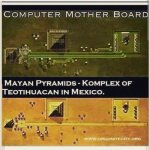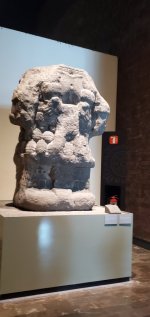It's not gonna be easy to build a logical structure here. I'll give it a try, and will ask for your attention in return. The information is rather scarce, and reading between the lines is pretty hard in this case. Half of this SH blog could probably serve as a prerequisite for this article, so I am only gonna provide several internal links related to the issue:
- The Wrath of the Gods: GeoWeapons vs Mud Flood
- Ancient Rome or Holy Roman Empire?
- Foundlings and the Orphan Trains: video by CONSPIRACY-R-US
- Terrorist organization known as ISIS was in reality an operation, where multiple human entities were created.
- Fontana del Tritone, Rome
- Temple of Artemis/Diana of Ephesus
- Artemis aka Diana of Ephesus +1 +1, Alma Mater, Phrygian Cybele Magna Mater and Egyptian Isis
- Foundlings Connection
- Operation ISIS: Islamic State of Iraq and Syria - no link for this one
Barberini's Fountain and Bees
Located in Rome, the fountain was executed in travertine in 1642–43. At its center rises a larger than lifesize muscular Triton, a minor sea god of ancient Greco-Roman legend, depicted as a merman kneeling on the sum of four dolphin tail-fins. His head is thrown back and his arms raise a conch to his lips; from it a jet of water spurts, formerly rising dramatically higher than it does today. The fountain has a base of four dolphins that entwine the papal tiara with crossed keys and the heraldic Barberini bees in their scaly tails.
- Common Black Horseflies
- Golden Horseflies
- Golden Bees
- Bees were used as an important symbol by the Barberini family, and therefore used by Bernini to adorn his creations, among which the Canopy of St. Peter stands out for its importance and majestic nature.
- If we are allowed for the hypothesis of Mr. Columbus rediscovering America, rather than getting it discovered, we have to be allowed for an additional hypothesis. I am talking about a major catastrophe, which lead to the Age of Discovery.
The Temple of Artemis
The Temple of Artemis, also known as the Temple of Diana, was a Greek temple dedicated to an ancient, local form of the goddess Artemis (associated with Diana, a Roman goddess). It was located in Ephesus (near the modern town of Selçuk in present-day Turkey). It was completely rebuilt twice, once after a devastating flood and three hundred years later after an act of arson, and in its final form was one of the Seven Wonders of the Ancient World. By 401 AD it had been ruined or destroyed.Alexander the Great offered to pay for the temple's rebuilding (1st, or 2nd?); the Ephesians tactfully refused, and eventually rebuilt it after his death, at their own expense. Work started in 323 BC and continued for many years. The third temple was larger than the second; 137 m (450 ft) long by 69 m (225 ft) wide and 18 m (60 ft) high, with more than 127 columns.
- This reconstruction survived for 600 years, and appears multiple times in early Christian accounts of Ephesus. According to the New Testament, the appearance of the first Christian missionary in Ephesus caused locals to fear for the temple's dishonor. The 2nd-century Acts of John includes an apocryphal tale of the temple's destruction: the apostle John prayed publicly in the Temple of Artemis, exorcising its demons and "of a sudden the altar of Artemis split in many pieces... and half the temple fell down," instantly converting the Ephesians, who wept, prayed or took flight.
- In 268 AD, the Temple was destroyed or damaged in a raid by the Goths, an East Germanic tribe; in the time of emperor Gallienus: "Respa, Veduc and Thuruar, leaders of the Goths, took ship and sailed across the strait of the Hellespont to Asia. There they laid waste many populous cities and set fire to the renowned temple of Diana at Ephesus," reported Jordanes in Getica. It is, however, unknown to what extent the temple was damaged.
- Whatever the extent of the injuries to the building, it appears to have been rebuilt or repaired, as the temple is noted to have been in use for worship during the rise of Christianity, and closed as a consequence of the Persecution of pagans in the late Roman Empire. However, the history of the temple between 268 and its closure by the Christian persecutions is not well known, and it is unconfirmed how big the damage of 268 was, and exactly which year it was closed by the Christians. Ammonius of Alexandria comments on the closure of the temple in his commentary of the Acts of the Apostles in the mid 5th-century, in which he gives the impression that the closure of the temple had occurred in his living memory. The closure of the Temple of Artemis is assumed to have occurred sometime during the course of the early to mid 5th-century, with the year of 407 as an early date. The closure of the temple was followed by the erasing of the name of Artemis from inscriptions around the city of Ephesus.
- It is unknown how long the building stood after the closure of the temple by the Christians. At least some of the stones from the temple were eventually used in construction of other buildings. Some of the columns in Hagia Sophia originally belonged to the temple of Artemis, and several statues and other decorative elements from the temple, throughout Constantinople.
- Sources: The main primary sources for the Temple of Artemis at Ephesus are Pliny the Elder's Natural History, Pomponius Mela i:17, and Plutarch's Life of Alexander (referencing the burning of the Artemiseum).
- Re-discovery: After six years of searching, the site of the temple was rediscovered in 1869 by an expedition led by John Turtle Wood and sponsored by the British Museum. These excavations continued until 1874. A few further fragments of sculpture were found during the 1904–1906 excavations directed by David George Hogarth. The recovered sculptured fragments of the 4th-century rebuilding and a few from the earlier temple, which had been used in the rubble fill for the rebuilding, were assembled and displayed in the "Ephesus Room" of the British Museum. In addition, the museum has part of possibly the oldest pot-hoard of coins in the world (600 BC) that had been buried in the foundations of the Archaic temple.
- Today the site of the temple, which lies just outside Selçuk, is marked by a single column constructed of dissociated fragments discovered on the site.
- Temple of Artemis - Wikipedia
Bees, Beehives and this Article
Contemporary and older bee references pertaining to this article are multiple. They are easy to find. The main idea here is that all our "Goddesses" have this bee connection.- Barberini family, in my opinion, has bees in their coat of arms for the exact same reason. They participated in the genetic creation of various entities.
- The honey bee was held sacred in antiquity, and civilizations that embraced its life-affirming gifts flourished; those who did not perished. Egypt was known as the land of the bee, its kings were called ‘beekeepers’ and the founders of the Nile Valley appear to have travelled from Mesopotamia with bees in their boats after the flood, circa 3,000 BCE.
- Cybele ruled over wild beasts and was also goddess of the bees.
- The Ephesian Artemis had as its symbol, the bee that appears on coins of the city and based on exhibits of Athens Museums on the shields of the Ephesian hoplites.
- There are tons of various sources on the internet linking our Goddesses with bees. None of them, in my opinion, provide us with the truthful reason for this historical fact.
- Queen Bees and Beehives are the common denominator here.
Queen Bees and Beehives
In my understanding, the Goddesses we have are the Queen Bees, and the Temples are the Behives. In other words we have factories with genetic machines inside.- Queen Bee: The term queen bee is typically used to refer to an adult, mated female that lives in a honey bee colony or hive; she is usually the mother of most, if not all, of the bees in the beehive. Queens are developed from larvae selected by worker bees and specially fed in order to become sexually mature. There is normally only one adult, mated queen in a hive, in which case the bees will usually follow and fiercely protect her.
- Beehive: A beehive is an enclosed, man-made structure in which some honey bee species live and raise their young. Though the word beehive is commonly used to describe the nest of any bee colony, scientific and professional literature distinguishes nest from hive. Nest is used to discuss colonies which house themselves in natural or artificial cavities or are hanging and exposed. Hive is used to describe an artificial, man-made structure to house a honey bee nest.
Queen Bees aka Goddesses
- A mature female reproductive cell, especially of a human or other animal, which can divide to give rise to an embryo usually only after fertilization by a male cell.
Barberini Connection
Alma Mater and Magna Mater
- The phrase is variously translated as "nourishing mother", "nursing mother", or "fostering mother", suggesting that a school provides intellectual nourishment to its students.
- TPTB tells us: Although alma (nourishing) was a common epithet for Ceres, Cybele, Venus, and other mother goddesses, it was not frequently used in conjunction with mater in classical Latin.
The Magna Mater was brought to Rome in the year 204 BCE from the Phrygian city of Pessinus in Asia Minor. Although the cult was introduced as a new form of the Phrygian goddess Matar by way of its Greek incarnation, the Cult of Cybele, it was actually a Roman construction of a "foreign" cult. From its first arrival, the Roman cult had a public branch that was established by the state in order to incorporate it into Roman public religion and a private branch that developed separately with its own rituals and modes of worship.
Orphans and Foundlings
KD: In my opinion the below are orphans, because they were made using a "Mother Goddess" machine/method. Clones if you will...
Statue of Liberty Tie-in
Operation ISIS
Those living in the United States know well that some of our acronyms do not sound cool for no reason. The words appear to be deliberately chosen to make the resulting acronym sound cool and meaningful. Nothing wrong with that, right? From this perspective I do not think that we ended up with "ISIS" for no reason.
We obviously had multiple news articles and other types of mass media coverage showing death and destruction. This is a PC touchy issue, and I want to make it clear, that in my opinion war atrocities are terrible and unacceptable. This is kind of said that little disclaimers are necessary in this day and age.
At the same time, what was the end result of the entire ordeal. The world ended up with a refugee crisis of unprecedented proportions. Well, at least in our life time it was unprecedented. Something tells me it did happen before. May be 150 years ago, may be 500 years ago, may be both, and may be many times over, and even bigger.
One of the "rumor based" alleged issues the world faced even made it to Snopes and sounded like this:
- Snopes opinion: Images claiming that waves of migrants and refugees asking for asylum are "mostly young men" are based on faulty or misleading statistics.
- Is This a Picture of a Male-Only Refugee Caravan Heading for U.S. Border?
- Snopes opinion: Check this one out for yourself. U.S. Border is not an issue here.
- Are the Syrian Refugees All 'Young, Strong Men'?
- Five reasons why the majority of refugees reaching Europe are men
I'm positive there were women and children among refugees. I have seen TV coverage and photographs. But simultaneously we have photographs like the one below. TPTB can easily explain this statistical improbability with some non-sense. After all they explained how the Egyptian Pyramids were built.
KD: Could it be that some of the ISIS caused refugees were not born in a natural way? I mean exactly what you are thinking right now. Could we have some artificially created people mixed into the refugee crowds? Could it in turn explain certain acts conducted by the refugees? The ones we attribute to cultural differences.
KD Summary: There you have it. This is the direction of my thoughts as far as "ancient genetics" go. I think certain individuals had, have and will have access to this knowledge and technology. This is how our 1860s "abandoned" cities could have gotten repopulated.
These "temple factories" were producing all sorts of living creatures. Meaning they were making everything, including humanoids, and other weird things we do not have properly classified today.
Obviously, there are no official sources for the information of this kind. For the most, this will sound bananas enough to dismiss it right away. For those interested in this particular topic, please contribute with the research of your own.
- I wanted to make one thing crystal clear. This article is about technology. Nothing in this article should be considered grounds for a political debate. I do have compassion for oppressed and unfortunate people living in the less fortunate countries. At the same time I do not trust TPTB with their explanations.






